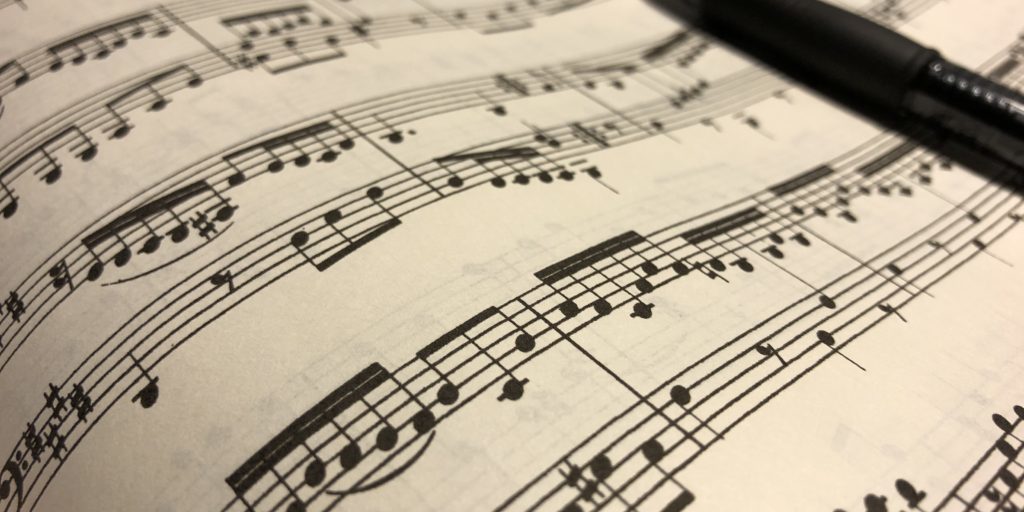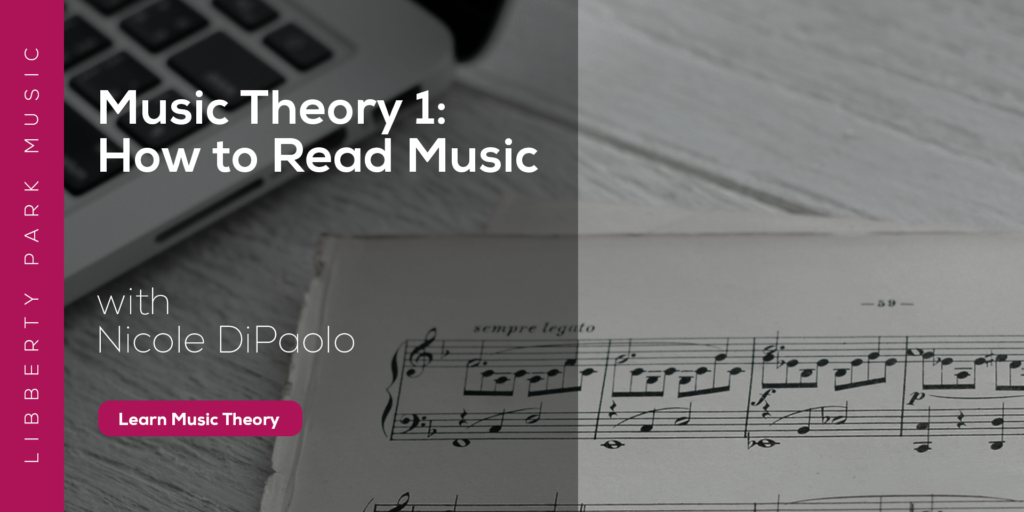
There are lots of articles out there claiming to contain “easy” piano pieces; some of them are good, others not so much, and many try to grab you with big famous piece names like "Claire de lune" or "Für Elise," even though neither of these pieces are anywhere close to easy...
Here at Liberty Park Music we decided to put together an article series showing off satisfying, well-constructed repertoire and arrangements that actually fall into the “easy” category for different difficulty levels. Many of these pieces may not be familiar to you, but they’ve been hand-picked for being fun to play, educational, and yes, for being easy.
But wait, there’s more! each piece is presented with a high-quality video performance by Liberty Park Music piano instructor West Troiano, and comes with a downloadable, custom-edited version of the score!
For this article we’ll be checking out 10 easy pieces from classical learning literature that all share a notable characteristic: they’re all in minor.
If you’ve been learning piano for any length of time you may have noticed that minor pieces are few and far between at the earlier difficulty levels. There are actually some good reasons for this - minor scales and chords can be more complicated to consider than simple major ones, and there tend to be a few extra moving parts in the way classical music in minor is put together.
Fortunately, as long as you’ve been keeping up with your basics, the pieces featured here should prove fairly easy to learn.
These pieces are presented in a graduating difficulty scale: the easiest is first, and the most challenging is last. Broadly speaking, the first piece ranks around the middle-beginner mark (meaning you’ve had some experience with playing pieces like this, and know how to play 8th notes), and the last piece should be no problem for someone playing at an intermediate level.
Let’s check them out!
1. Little Prelude - Ludwig Schytte
This beautiful little piece is constructed using a classic compositional technique whereby each measure simply contains chords that are then “broken” up to create the musical figures. For this piece, these chord figures are played in a rising fashion, starting with the left hand, and progressing through the right hand. In fact, a great way to learn this piece is to play the notes of the chords unbroken (i.e., as full chords), and go through the whole piece like that, using the same fingering you would if you were playing them as notated. This really helps your hands get comfortable with the position changes, and will help making this already-easy piece even easier to learn.
Why it's Easy:
- Built using simple chords
- Musical motion is calm and easy to follow
- Uses the mostly-white key scale of A minor
- Very simple musical instructions
2. Etude, Op. 101, No. 60 - Ferdinand Beyer
Hard to imagine a piece featuring a tempo marking of “comodo” (comfortable) to be anything other than easy, right? While that’s not always the case, it certainly is for this pretty piece by composer Ferdinand Beyer (1803–1863). This piece employs a specific kind of compositional technique called counterpoint, in which multiple lines are woven together to create the musical whole. The use of counterpoint can often result in more challenging pieces that have more to keep track of, but in this case we have an easy, “comfortable” back and forth between the hands, weaving together a contemplative minor charmer.
Why it's Easy:
- Calm, slow tempo
- Consistent texture - mostly quarter note and 8th note lines
- Easy counterpoint motion that seems “natural” to the hands
- White notes for days - not an accidental in sight!
3. Bourrée - Christoph Graupner
A bourrée is a kind of French dance piece, typically found as part of older Baroque keyboard dance suites. While usually lively in character, this minor key bourrée, from a suite by the German composer Christoph Graupner (1683–1760), is more somber in character, and can comfortably be taken at a slower speed. While in traditional performance the basic notation of this piece would have likely been heavily ornamented and improvised upon, it stands nicely as a simple, short, unadorned minor piece that’s well worth being learned.
Why it's Easy:
- Can be taken at a gentle tempo
- Fairly easy and clear position changes
- Mostly quarter notes and half notes
- Uses the simple scale of E minor, and has relatively few extra accidentals
4. Etude, Op. 108, No. 5 - Ludwig Schytte
Etude pieces are great because they often let us focus on a specific movement or technique, without sacrificing musicality in the process. This piece, by Danish composer Ludwig (often seen as “Ludvig”) Schytte (1848–1909), shows off a very clear theme of movement that persists for the entire piece. Much like the “Little Prelude” piece we saw earlier (also by Ludwig Schytte, you may have noticed…), this piece contains almost exclusively broken-up chords, this time two per measure. Once again, learning this piece by thinking about the chords can really help to minimize the amount of memorizing it feels like you have to do between each figure. There are also several combinations of measures that just go back and forth between two chords, further simplifying how you can go about considering your practice.
Why it's Easy:
- Consistent texture - pretty much one kind of move throughout
- Built using chords that are simply broken up to create the figures
- Very few leaps - most movements are by step or skip
- Lots of repetition
5. Prelude in A minor: Andante - Johann Christian Bach
Johann Sebastian Bach (1685–1750) had a lot of kids - twenty, to be precise. While not all of them survived childhood, at least a few went on to become well-regarded musicians themselves, including the composer of this piece, Bach’s eighteenth child, Johann Christian Bach (1735–1782). This piece exhibits a slightly more elaborate take on the “made-entirely-of-broken-chords” style we’ve been seeing, with some more complicated harmonies and motion. Fortunately, the piece is made easier by giving the left hand only one note to play per measure for most of the measures, and through the use of some very clear harmonic sequence motion.
Why it's Easy:
- Consistent texture - one note in the bass followed by a broken chord in the right hand
- Relatively small changes between most harmonies - stepwise and skipwise
- A very clear “sequence” in the B section
- Some added accidentals, but not too many
6. Etude, Op. 82, No. 52 - Cornelius Gurlitt
Alright, let’s get some speed going! If you’re not familiar with 16th notes, this piece can look a little scary, but it’s actually a perfect example of something that’s much easier than it appears. In fact, if you’ve been practicing your scales, this piece should be extra easy, as all of the big scale descents are just basic white note scales, with an octave leap tacked on to the front. And while we do have some small position changes for the right hand figures, something about them just seems easy, fitting very naturally with some of the more comfortable movements of the hand. Take an extra moment or two to figure out the rhythms, and you’ll be impressing your friends with this one in no time.
Why it's Easy:
- Easy scales - if you can play a C major scale well, you can play this piece
- Figures that “fit” - right hand figures fit well with the natural motion of the hand
- Relatively easy rhythms
- A minor scale again - few accidentals
7. Staccato - Carl Reineke
Articulations, which are the symbols we use to indicate how we should be emphasizing the notes, can be some of the most challenging details to realize in the music, but playing them well is often one of the key differences between the playing of less and more experienced pianists. We’re talking here about the difference between staccato, legato, accents, and so on. As you might be guessing, this piece is all about staccatos, and fortunately, once you get used to the feeling, it’s actually a rather easy piece to get under your fingers. The trick is to get the rhythm, and then rely on the repetitions and the small movements to help make things easier. And it sounds really cool! It’s a very unique feeling piece, and is quite rewarding to those who are at the level to learn it easily.
Why it's Easy:
- A memorable rhythm - get it in your fingers and it’ll stick with you
- A relatively sparse, spacious texture
- Recognizable repetition
8. The Orphan, Op. 64, No. 4 - Louis Streabbog
We’re entering the territory of more intermediate level pieces, but while these pieces do require a bit more experience to play, they more than make up for it with a rewarding musicality that’s relatively easy to access for those already playing at their level.
For this lovely piece, which is taken from the second set of "Melodious Pieces for Piano,” by Louis Streabbog (aka Jean Louis Gobbearts)(1835–1886), the ease is in the gentle consistency of the textures, and the sensible hand repositioning. The left hand might look a little busy at first, but the easy-to-learn rising and falling figures will quickly win you over once you start working on them, and the sorrowful, open melody fits nicely to the natural movements of the hand. This piece has a bit of rhythmic interest in its center section, but as long as you know how to stick to the clear 6/8 time signature, piecing the rhythm together should be no problem.
Why it's Easy:
- A steady, easy-to-learn accompaniment and melody
- Lots of repetition, particularly between the first and last sections
- Almost all notes are bigger than the beat (making them easy to count)
- Emotional appeal (because if it’s especially beautiful, you’ll learn it more easily!)
9. Old French Song - Peter Ilyich Tchaikovsky
Another beauty of a piece, Old French Song is taken from Tchaikovsky’s famous opus of relatively simple piano pieces, “Children’s Album,” Op. 39. This is certainly the easiest piece from that selection, and, fortunately for us, it presents a sad but gorgeous little story expressed via the darker sonority of the G minor scale. While there are some tricky moments in this piece, the vast majority of it sticks to single positions, with minimal (and clear) repositions in the first and last sections. If you’ve become comfortable with lifting and replacing your hands in different positions on the keyboard, this piece will be a cinch, and you’ll get some good practice at “splitting” the left hand - holding one long bass note on the bottom while playing a moving line on top.
Why it's Easy:
- Sticks to relatively easy and clear position changes
- Short, sweet, and repetitive
- G minor scale “fits” well under the hands, without being too complicated
10. Minuet in G minor - Christian Petzold
Our final selection is the minor counterpart to the famous Minuet in G major that is so often mistakenly attributed to J.S. Bach. These sibling pieces, which appear in the well-known compilation of works Bach put together for his second wife and family, “Anna Magdalena’s Notebook,” were in fact composed by a contemporary of Bach’s, Christian Petzold (1677–1733). The credits have been largely corrected in most modern publications, but you’ll still see the name Bach attached to these pieces from less-well-informed sources, or in older publishings.
This piece is relatively easy on account of it’s textural simplicity, but it requires some attention to fingering and hand repositioning that might be unfamiliar to the less experienced player. The stately, almost mournful melody echos the movements of its more popular, major relative - octave leaps swing back up the five-fingered position, and simple sequences wind their way through closely related keys. Areas requiring a higher concentration on the movement of the fingers resolve comfortably to scales and stepwise lines, making this piece an interesting blend of challenge and ease.
Why it's Easy:
- A gentle, open texture
- Position changes resolve to easy stepwise lines and scales
- Relatively easy modulations
- Clear, uncomplicated sequences
Visit Liberty Park Music!
Like what you saw in this article? We have lots more of it at libertyparkmusic.com, including full courses for piano, music theory, guitar, and drums. Come check us out, and take the next step on your musical journey.
Keep an eye out for more Easy Piano articles to come, and happy practicing!
About the Author: West Troiano
West has over 10 years of teaching experience in settings that vary from private studios to college classrooms. In addition to teaching through traditional forms of piano pedagogy, West frequently produces music and teaching materials that cater to the needs of his students. Check out West's course on Piano Etudes for both beginners and intermediate pianists.








